Sino-American Taiji Club at UCLA
社極太美中
"Traditional Chinese martial arts since 1976 and the USA representative for my teacher. I am his direct disciple; this is a great honour that I treasure dearly." --Dou Wanchun
Studies in these martial arts are a lifetime investment. What one accomplishes depends on the level of dedication placed in training.
What we have to offer in the way of coursework cannot be found anywhere else in the USA.
Many of our 氣功 Qìgōng trainings have been highly successful in the treatment of cancer, correcting reproductive problems, and alleviation of problems related to arthritis, rheumatism, etc. This is a long forgotten methodology that I have been fortunate to have learned from my teacher who has trained for over 70 years. Nowadays, many 氣功 Qìgōng exercises are purely for exercise and a "feeling" of felicitic benefit. The original learning having been long lost through time and non-transmission of the inner teachings from teacher to student that can only occur in an unbroken line of 師徒 Shī - Tú (Master - Disciple) relationship. There are many case studies to verify the benefits of what we do.
Unfortunately, this is only a partial picture. It is impossible to mention all that is available without explaining what each item means. Be that as it may, I will explain the methodology of classes a bit.
All who enter our training enter as novices. We have students who have over 20 years experience training in styles like 太極拳 Tàijíquán and 形意拳 Xíngyìquán before reaching us, as well as students with absolutely zero prior knowledge of any martial arts at all. Everyone begins with us enters tabula rasa. The 128 form 太極拳 Tàijíquán set is the first to be learned. It forms the foundation for all subsequent training. This training allows for the correction and perfection of stancework, basics, and proper 氣功 Qìgōng. After the form has been learned, it depends on the teacher as to what is learned next. If a student has a certain ability or desired direction, this is taken into strong consideration and is fostered with forms appropriate to achieving the goals desired by said student. The most important thing is the development of the individual.
Accomplishments:
Linda is my head instructor at UCLA. Linda has studied with me since 1996 and is a four gold medal winner (she won gold medals in all the events she entered) of the International Championships in São Paulo, Brazil, in 2006. Linda won first place in the following categories:
太極拳 Tàijíquán
太極劍 Tàijíjiàn
八卦掌 Bāguàzhǎng
形意拳 Xíngyìquán
Gregg Orenstein and Ian Findley both won gold medals in the category of 形意拳 Xíngyìquán.
*********
I hope this information brings greater understanding.
*********************************************************************************
Single Person Hand Systems:
揚式太極拳 Yángshì Tàijíquán - Yang Style Grand Ultimate Fist
孫式八卦掌 Sūnshì Bāguàzhǎng - Sun Style Eight Trigrams Palms
傅式八卦掌 Fùshì Bāguàzhǎng - Fu Style Eight Trigrams Palms
孫式形意拳 Sūnshì Xíngyìquán - Sun Style Form and Will Fist
兩儀拳 Liǎngyíquán - Two Principles Fist
四象拳 Sìxiàng quán - Four Images/Polarities Fist
八極門 Bājímén - Eight Ultimates System
Two-Person Hand Systems:
揚式太極推手 Yángshì Tàijí Tuīshǒu - Yang Style Taiji Push-Hands
揚式太極對練 Yángshì Tàijí Duìliàn - Yang Style Taiji Two-Person Form
孫式八卦對練 Sūnshì Bāguà Duìliàn - Sun Style Bagua Two-Person Form
傅式八卦對練 Fùshì Bāguà Duìliàn - Fu Style Bagua Two-Person Form
孫式形意對練 Xíngyì Duìliàn - Sun Style Xingyi Two-Person Form
Some Of The Weapons:
揚式太極刀 Yángshì Tàijídāo - Yang Style Taiji Broadsword
八卦刀 Bāguàdāo - Eight Trigrams Broadsword
吳式太極劍 Wúshì Tàijíjiàn - Wu Style Taiji Straight Sword
武當太乙劍 Wǔdāng Jiàn - Wudang Straight Sword
揚式太極槍 Yángshì Tàijí Qiāng - Yang Style Taiji Lance
A wide array of 氣功 Qìgōng - Energy Work
*********************************************************************************
Student Training
In 傳統中國武術 Chuántǒng Zhōngguó Wǔshù/Traditional Chinese Martial Arts (太極 Tàijí is a Martial Art), there is an expression, "拳打千遍身打自然 quándá qiānbiàn shēndá zìrán/train a thousand times to develop natural skill." When you train 太極 Tàijí, the most important thing to do is to train over and over again until your movements become part of your muscle memory. One cannot train once or twice and assume that one has reached the maximum learning possible. The student has to be persistent and allow the movements to teach the body directly.
In class, each student is given equal access to asking questions, direct clarification by repetition, and observation of techniques. Showing the movements over and over again in group is pivotal and offers great benefits. It is with this in mind that we work together in bringing forth the best results possible.
The key word formula for truly making gains in 太極 Tàijí: patience, pertinacity, and purity of heart. If you truly wish to learn and gain the felicitic benefits of 太極 Tàijí, you only need to be patient for results, be pertinacious in your training, and have an open heart (and mind) to what you are taught and how you train. "冰凍三尺非一日之寒 Bīngdòngsānchǐ fēiyīrìzhīhán/Three feet of ice does not form in a single day; (Paraphrase) Rome was not built in a day." There are no shortcuts.
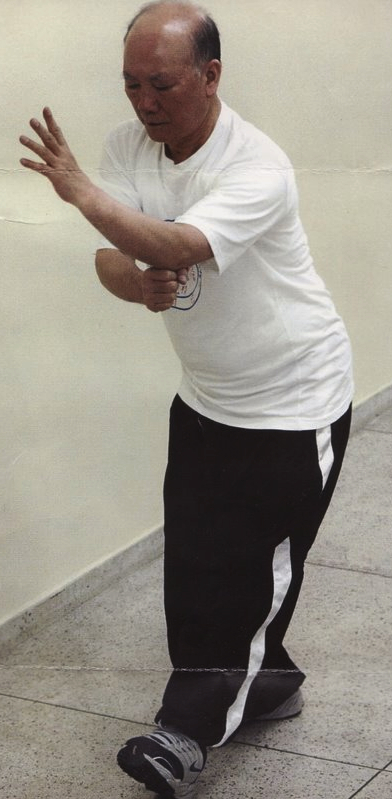


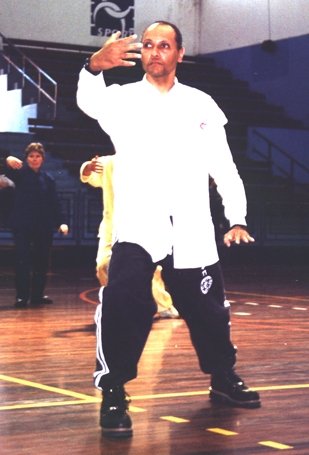
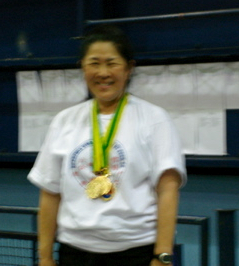

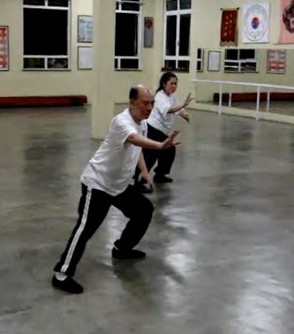

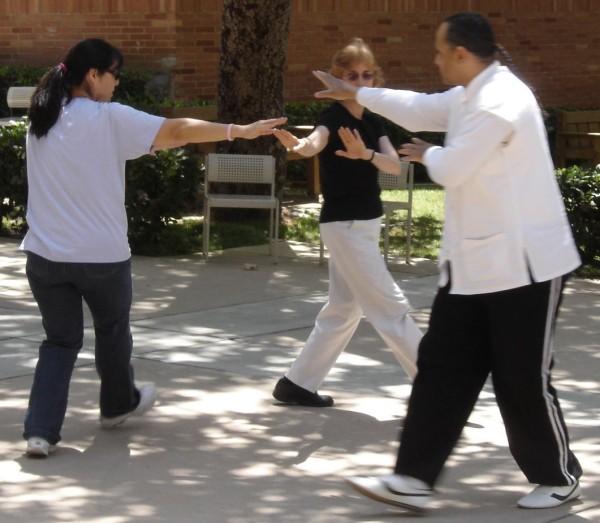

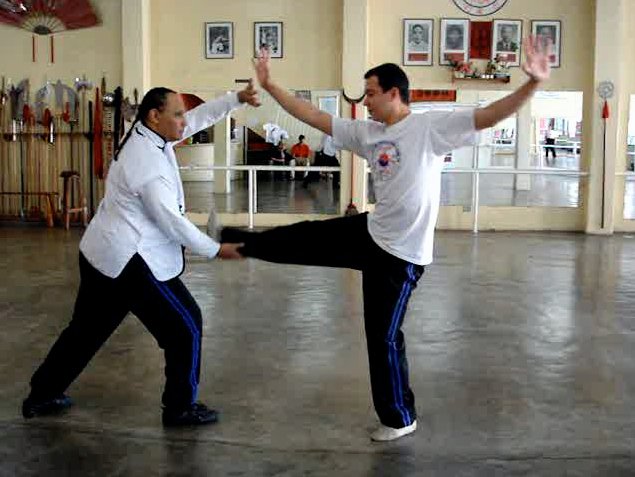

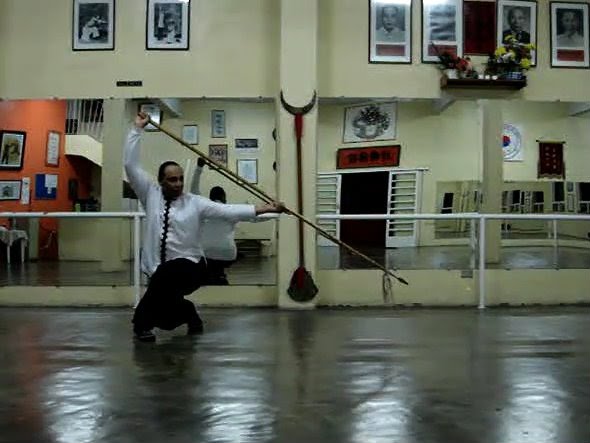
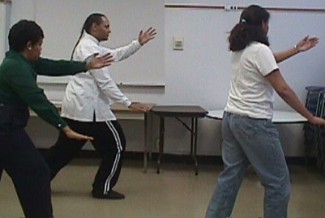

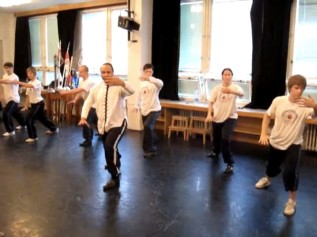



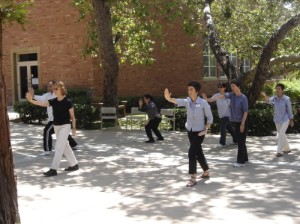
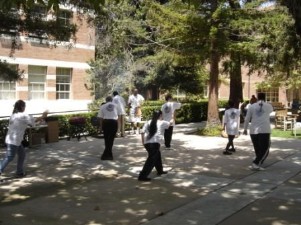
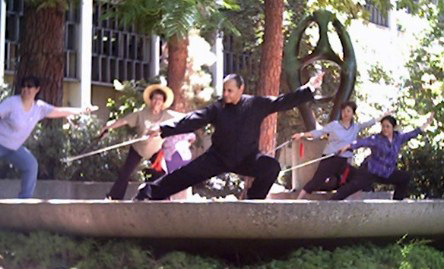
顧汝章 Gù Rǔzhāng performing:
攬雀尾 (左掤) Lǎn Què Wěi (Zuǒ Péng)
Grasp The Sparrow’s Tail (Left Ward Off)
顧汝章 Gù Rǔzhāng performing:
白鶴亮翅 Báihè Liàng Chì
White Crane Reveals Its Wings
USA Branch Matrix
Dou Wanchun
Direct Disciple #81 of International Grandmaster Chan Kowk Wai
Contact: Taijiquan128@gmail.com
©2010 All Rights Reserved and Protected by International Copyright for all information, graphics, and other media present or connected with these pages.